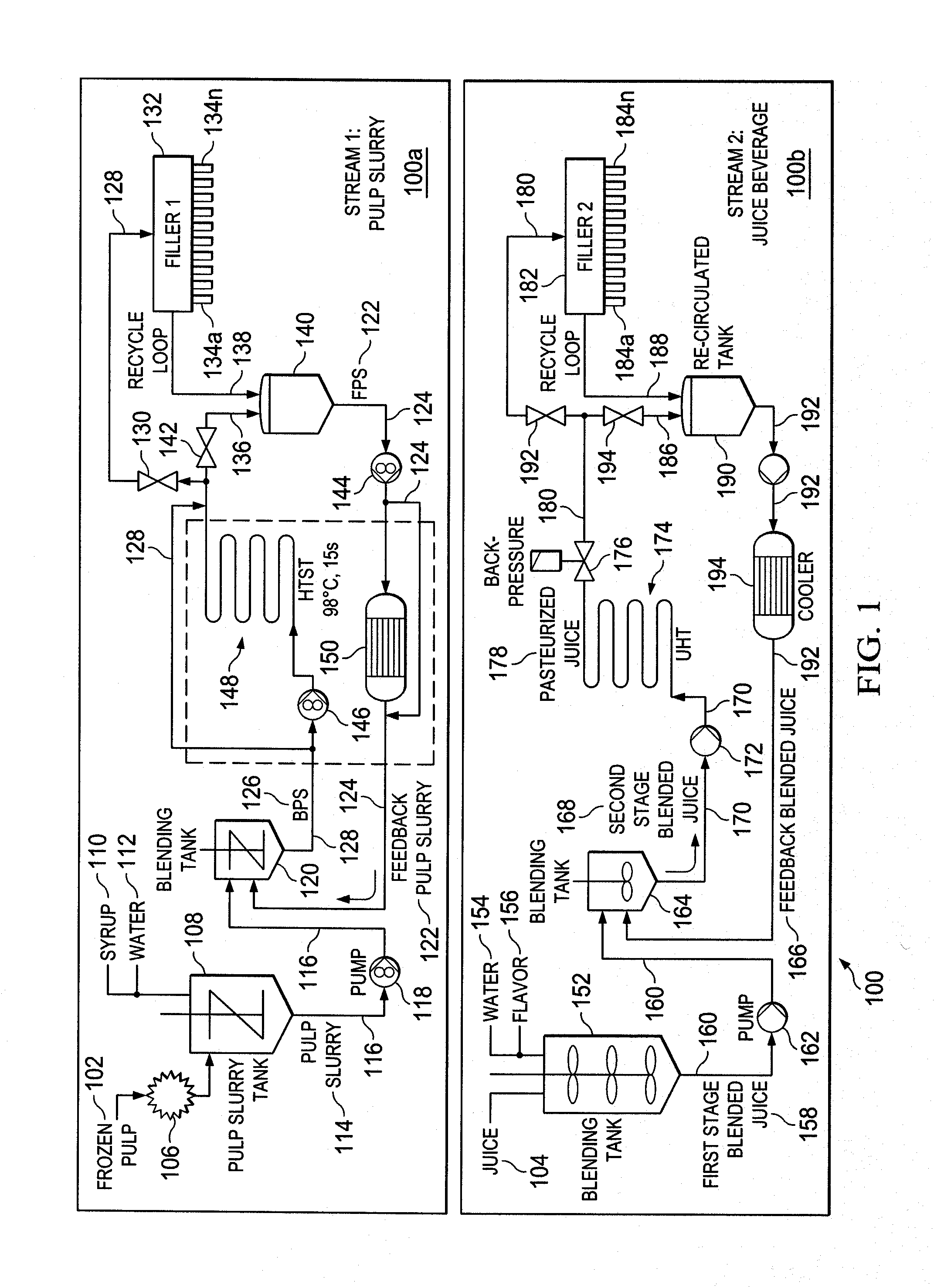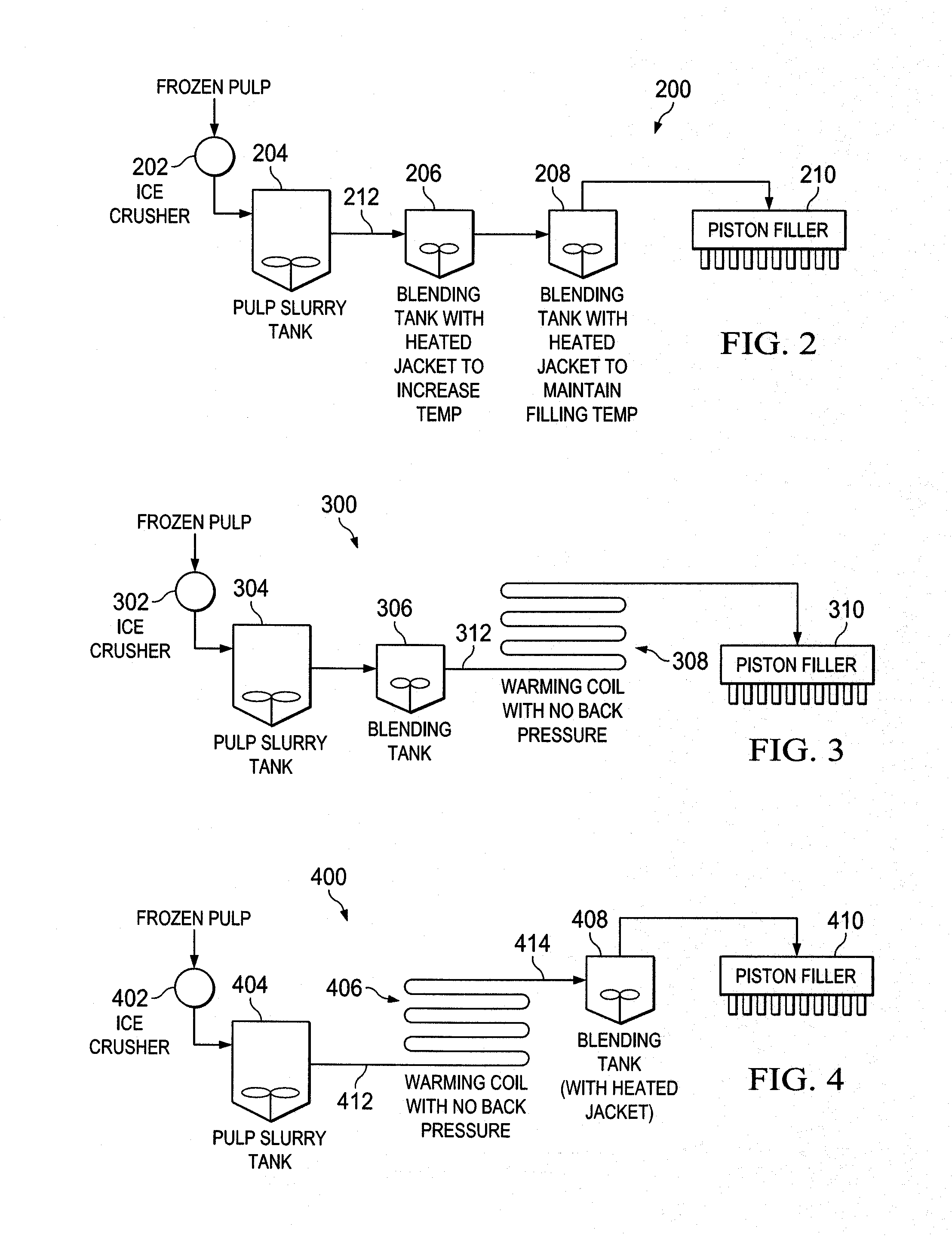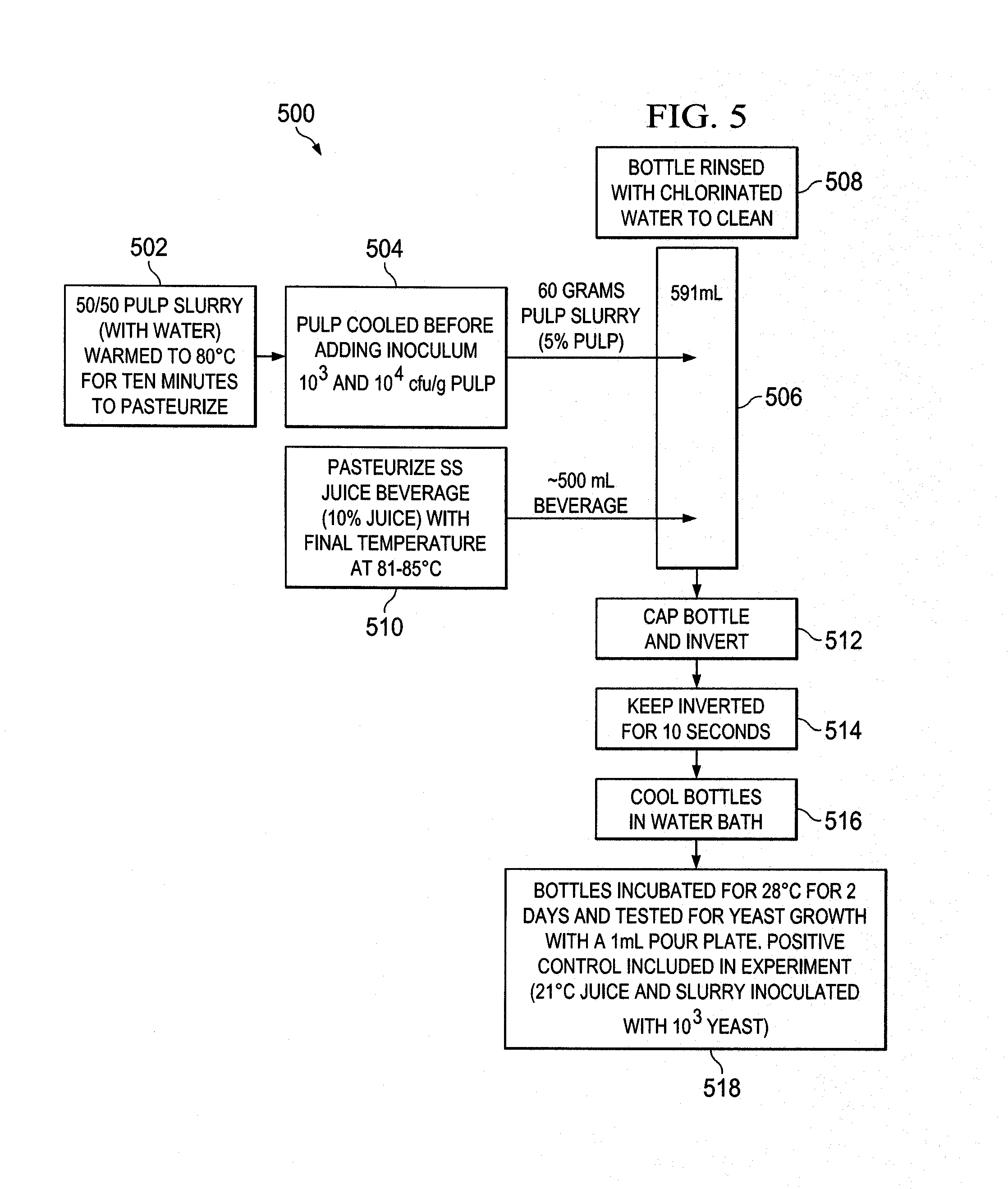In-bottle pasteurization
a technology of in-bottle pasteurization and in-bottle pulp, which is applied in the directions of packaging sterilisation, transportation and packaging, and preventing decay of containers, etc. it can solve the problems of inefficiency and food that is less acceptable from a taste perspective of consumers than pasteurization, and the overall cost of pasteurization of pulp is both costly and inefficient, so as to achieve significant reduction of manufacturing costs and pulp processing inefficiency.
- Summary
- Abstract
- Description
- Claims
- Application Information
AI Technical Summary
Benefits of technology
Problems solved by technology
Method used
Image
Examples
example 1
In-Package Temperature Monitoring
[0059]For monitoring the temperature change of the liquid in the package after pasteurized juice was added, a cap was fitted with a food thermometer by making a small hole in the top of a plastic bottle. In certain embodiments, the process was carried out with 84° C. juice and 22° C. pulp. After the liquid in the package reached a temperature equilibrium (˜45s), the temperature was recorded with the bottle upright for 4 minutes near the edges of the bottle (with the expectation that near the edge of the plastic bottle was where heat loss would occur at the fastest rate).
[0060]In certain embodiments, the in-package temperature was monitored for over 3.5 minutes after hot juice (84° C.) was added to room temperature (22.5° C.) pulp (FIG. 9). The temperature remained high enough over that length of time to cause a 6-log reduction in representative spoilage yeast, mold, or bacteria as demonstrated in the thermal death study data set (FIGS. 6-8).
example 2
Thermal Death Studies (D- and Z-Values)
[0061]To test the efficiency of the system, thermal death studies with a selection of microorganisms including Penicillium crysogenum, Saccharomyces cerevisiae, and Gluconobacter spp as example for heat-sensitive microorganisms were conducted. The data demonstrate substantial microorganism inactivation in response to predetermined temperature, monitored in-package over time after adding hot juice with pulp.
[0062]In certain embodiments, a production process was performed using common spoilage microorganisms to demonstrate that hot, pasteurized juice filled on top of unpasteurized pulp can substantially inactivate microorganisms, which caused the product to be pasteurized and free of microorganisms or having a significantly reduced number of spoilage microorganisms. In certain studies, thermal death studies in the beverage mix were conducted while the temperature change in the package was monitored.
[0063]Disclosed are also examples in which heate...
example 3
[0067]Orange pulp and peach bits were mixed at a ratio of 50 / 50 (w / w) and heated to 80° C. for 10 minutes to kill any microorganisms present in the sample. The slurry was cooled to 3 and 104 cfu / g pulp was the target inoculation; for peach bits, 105 and 106 cfu / g was the target inoculation. Inoculations were performed by aseptically transferring the microorganisms diluted in phosphate buffered saline. Inoculated pulp was plated out after each experiment to enumerate the microorganisms and to ensure that the inoculation was viable.
PUM
 Login to View More
Login to View More Abstract
Description
Claims
Application Information
 Login to View More
Login to View More - R&D
- Intellectual Property
- Life Sciences
- Materials
- Tech Scout
- Unparalleled Data Quality
- Higher Quality Content
- 60% Fewer Hallucinations
Browse by: Latest US Patents, China's latest patents, Technical Efficacy Thesaurus, Application Domain, Technology Topic, Popular Technical Reports.
© 2025 PatSnap. All rights reserved.Legal|Privacy policy|Modern Slavery Act Transparency Statement|Sitemap|About US| Contact US: help@patsnap.com



